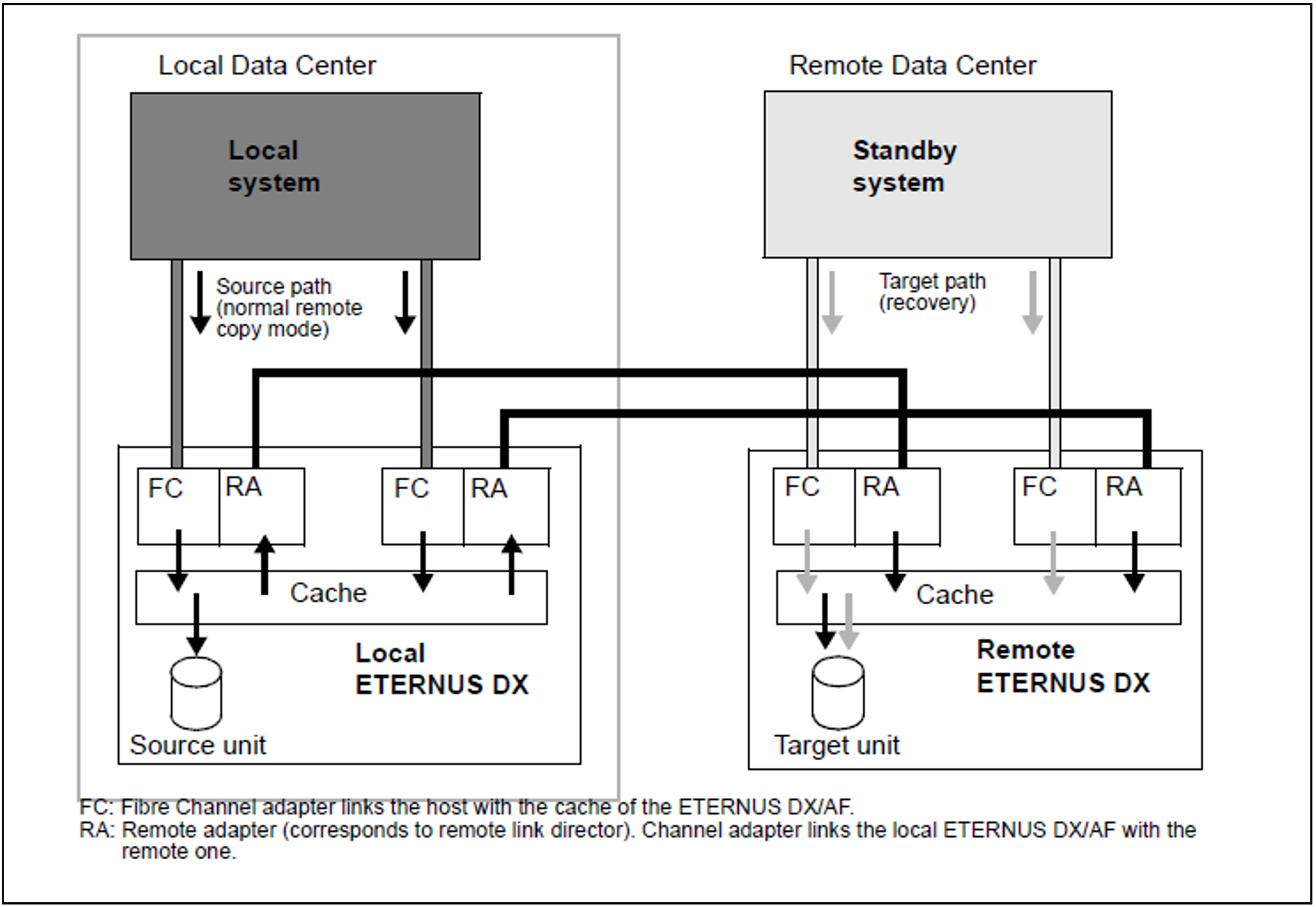There are unidirectional and bidirectional REC configurations:
Unidirectional means that with two storage systems all source units are located in one storage system and all target units in the other.
In bidirectional configurations, each storage system has both source and target units.
Each server that uses REC units in normal remote copy mode must generate the source units in the usual way. The target units must be generated for each server that is to access them. If the same server is to access source and target units, both must be generated on the server. It is then possible to access the target units if the storage system with the source units fails.
The figure below shows a unidirectional remote copy configuration for REC (simplified diagram). The local storage system contains all the source units. It is connected to the remote storage system over two remote links. The remote storage system contains all the target units.
Remote copy mode is indicated by the black arrows. The local system accesses the source units. The target units are accessed via the remote links. If the local system fails in the event of a disaster, processing can be continued on the standby system (gray arrows). The standby system accesses the target units after it has been released.
Figure 21: Unidirectional remote copy configuration (REC)

